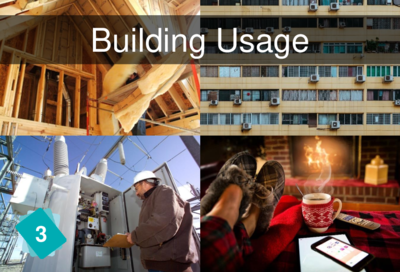En-en adult card 3 building: Difference between revisions
Jump to navigation
Jump to search
m (Minoir changes in text) |
m (Minor corrections) |
||
| Line 7: | Line 7: | ||
== Explanation == | == Explanation == | ||
We consider here buildings usage, not their construction (which is | We consider here buildings' usage, not their construction (which is included in the card on [[En-en adult card 2 industry|Industry]]). This includes heating, air-conditioning, lighting, electronics, etc. The big topic in Europe and the US is the thermal insulation of buildings. As far as new construction is concerned, it is vital to build well-insulated buildings. However, the stakes are limited as the standards for new buildings are much higher than in the past and only a small proportion (1%) of buildings are constructed each year. The challenge is therefore much more in the thermal renovation of buildings. | ||
== Other possible links == | == Other possible links == | ||
Revision as of 19:21, 12 February 2021
Card #3: Building
| Causes | Consequences | |

|
The building sector (housing and commercial use) uses fossil fuels and electricity.
It accounts for 20% of greenhouse gas (GHG) emissions.
Explanation
We consider here buildings' usage, not their construction (which is included in the card on Industry). This includes heating, air-conditioning, lighting, electronics, etc. The big topic in Europe and the US is the thermal insulation of buildings. As far as new construction is concerned, it is vital to build well-insulated buildings. However, the stakes are limited as the standards for new buildings are much higher than in the past and only a small proportion (1%) of buildings are constructed each year. The challenge is therefore much more in the thermal renovation of buildings.
Other possible links
Consequences
- River flooding Soil artificialisation is also responsible for flooding because the soil is no longer able to absorb rain water.
- Aerosols Buildings emit few aerosols directly. The only significant emissions are chimney fires. In Chamonix, 85% of the fine particles present in the atmosphere come from wood heating [1].